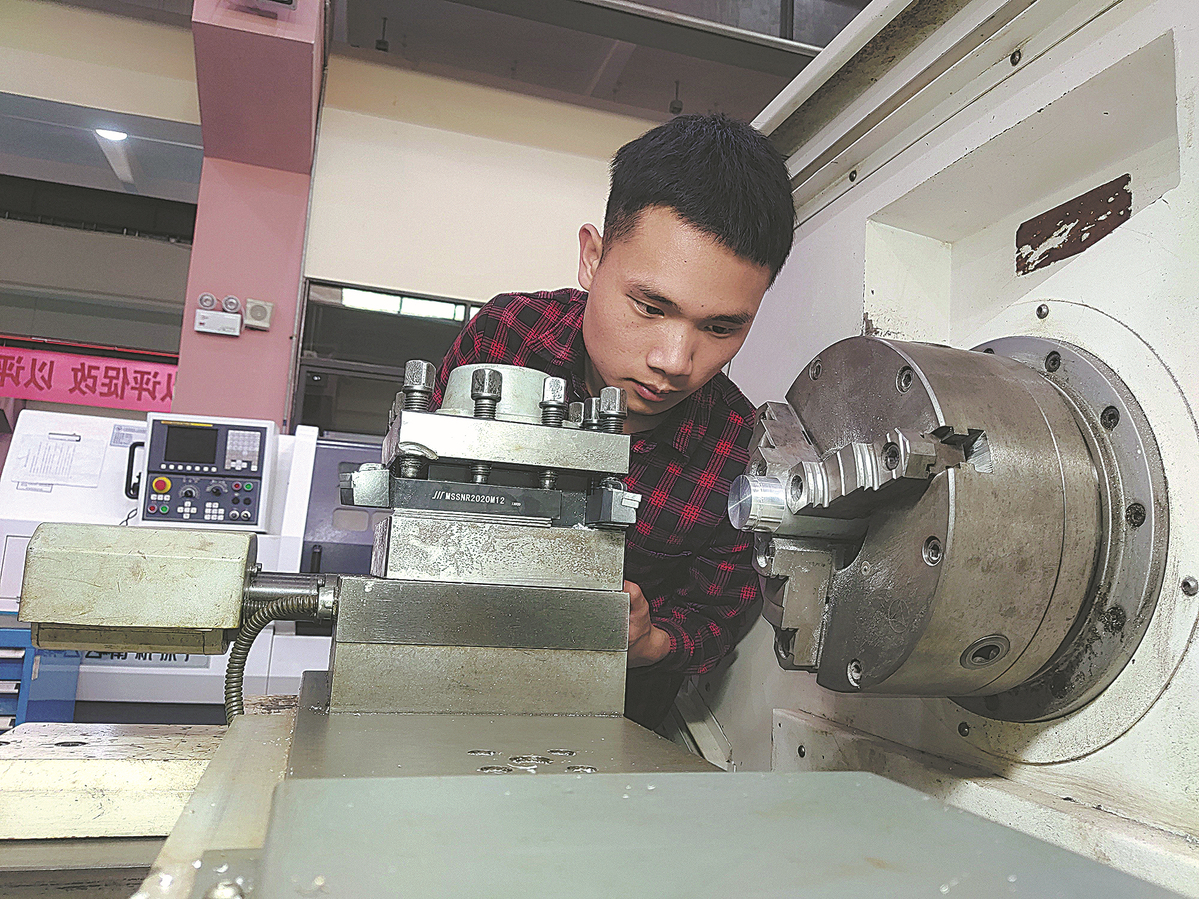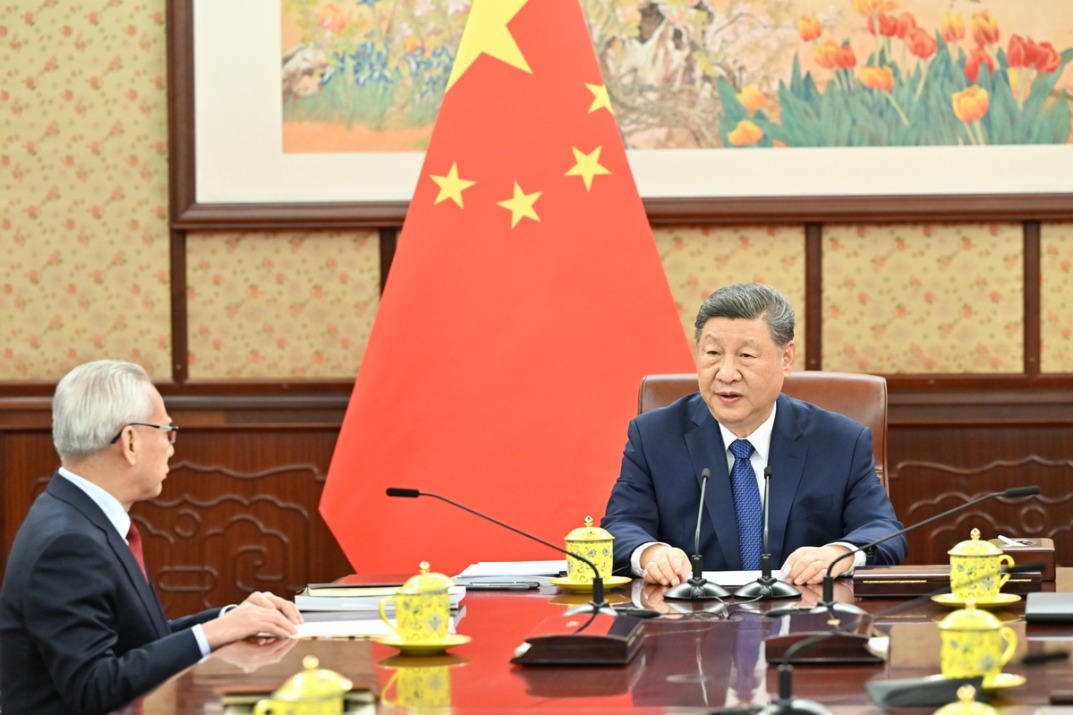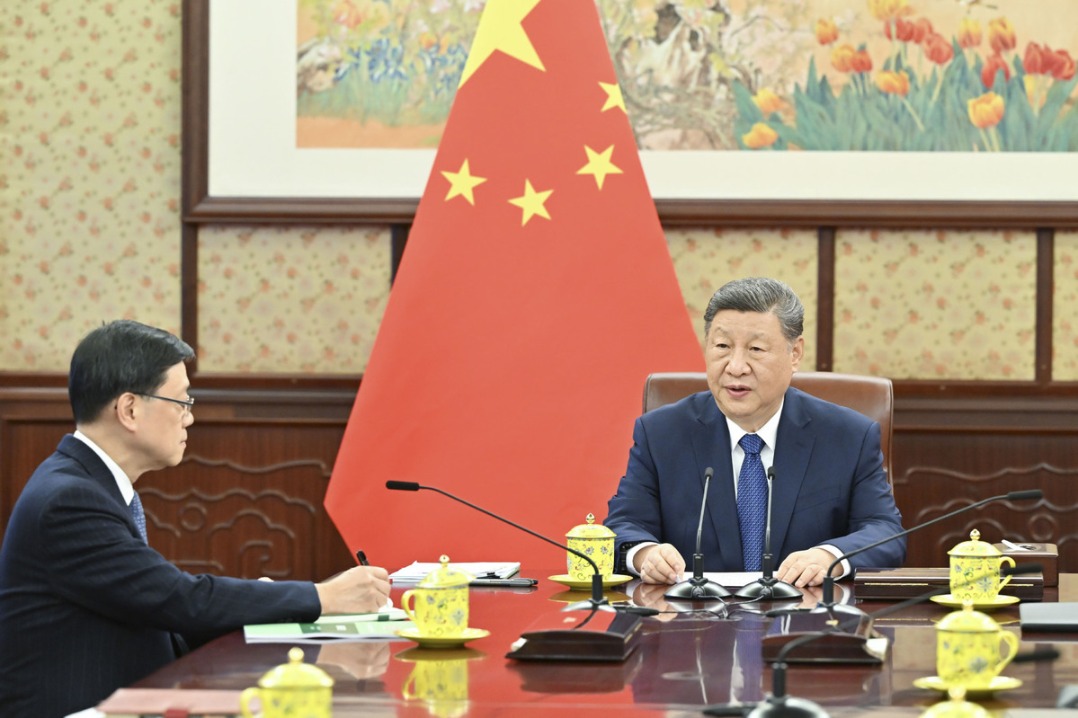Higher standards set to improve vocational schools
By ZOU SHUO | China Daily | Updated: 2022-11-21 09:26

Sufficient infrastructure, teaching staff to underscore technical education
As China aims to train more high-caliber technical and vocational professionals, governments have been tasked with improving the condition and infrastructure of vocational schools.
More than 80 percent must reach the standards set by the end of next year, and more than 90 percent must meet the same standards by the end of 2025, according to a recent notice.
Low-quality schools with limited social recognition that fail to meet standards should be merged or closed, said the notice, which was released by the Ministry of Education and four other departments.
Governments are encouraged to work with schools to deal with shortfalls such as shortages of land, dormitories, classrooms or laboratories.
The notice included detailed standards to be met, such as the student-teacher ratio, coverage area of the school, and the number of books and amount of equipment.
Secondary vocational schools should have at least 60 full-time teachers and the student-teacher ratio should not exceed 20:1.Teachers with master's degrees or higher should account for at least 15 percent of the number of teachers in higher vocational schools.
Governments need to raise the quality of teachers, build more high-quality training centers for vocational students and equip schools with sufficient books, computers and training equipment.
Vocational schools should make good use of sources of funding such as special bonds for local governments and foreign government loans.
More investment from the private sector and other channels is encouraged so that the condition of vocational schools can be improved without incurring new debt.
An official from the Ministry of Education's department of vocational and adult education said that government investment in secondary vocational schools has been low for a long time, so it is not unusual that schools do not meet standards.
Higher vocational schools have increased enrollment by 4.13 million over the past three years, with total enrollment this year up by almost 40 percent on three years ago, so there is a shortage of education resources, the official said.
Investment in secondary vocational schools totaled 287.2 billion yuan ($40.3 billion) in 2020, accounting for half of the regular high schools, while investment in higher vocational schools in the same year totaled 275.8 billion yuan, accounting for less than 20 percent of regular colleges, according to government figures.
The newly revised Vocational Education Law, which took effect in May, stresses that vocational education is as important as regular education.
The law calls for the better use of national education funds so that the investment in vocational education matches development needs.
Jia Sulan, principal of Tianjin Zhonghua Secondary Vocational School, said that the notice shows the central government's continued support for vocational education and vocational schools.
Jia said her school meets most of the standards, apart from the one on the land area, as it is located in a built-up area in central Tianjin.
"As long as different levels of government implement the new policy, I believe vocational education will develop better and its attractiveness will greatly improve," she added.
























